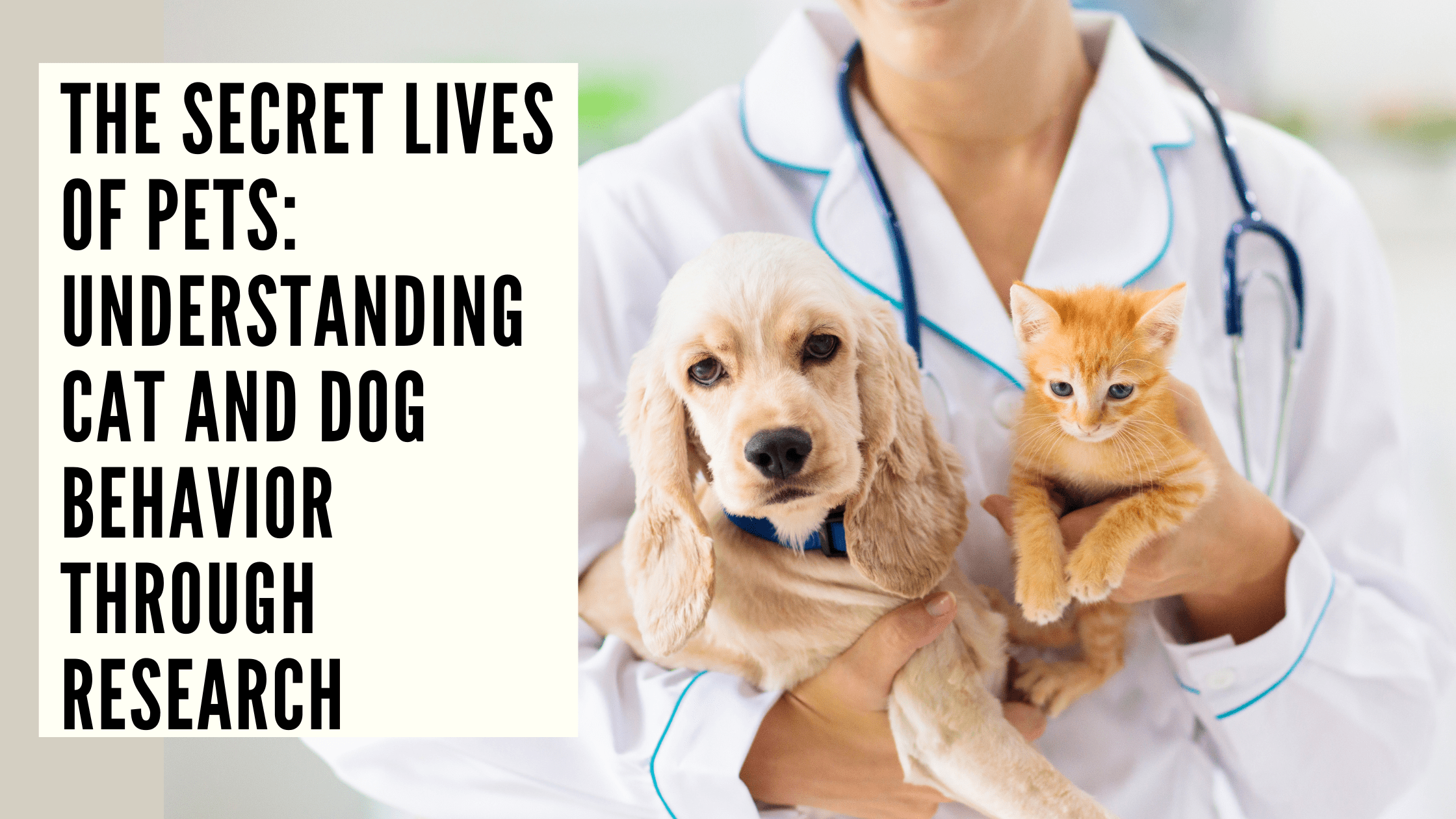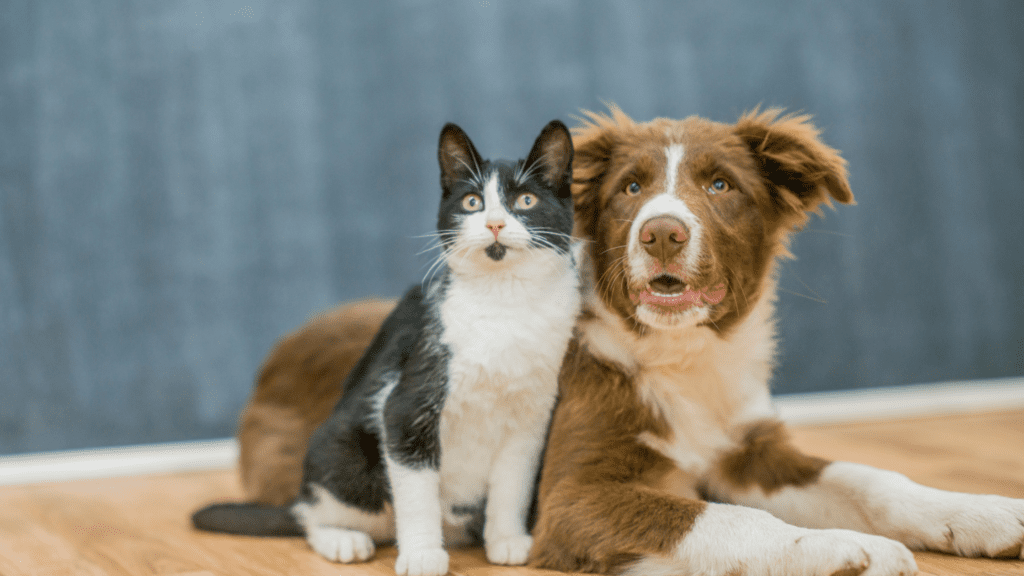Should I Get a Cat or Dog? The Ultimate Pet Owner’s Guide!
Deciding whether to get a cat or dog is a significant decision that will impact your life for years. Pets bring joy, companionship, and responsibility, so it’s essential to choose the right one based on your lifestyle and preferences. According to the American Pet Products Association (APPA), 86.9 million households in the U.S. own a pet, with 46.5 million being dog owners and 31.9 million owning cats. This statistic highlights the immense popularity of both pets, but which one is the best fit for you?
While both cats and dogs make wonderful companions, they have very different needs, temperaments, and care requirements. Dogs are known for their loyalty, energy, and need for social interaction, whereas cats are often more independent and require less maintenance. Some people thrive with the constant companionship and outdoor lifestyle that a dog offers, while others prefer the quieter, low-maintenance nature of a cat.
In this guide, we will explore the key factors that can help you decide whether you should get a dog or cat, based on lifestyle, personality, care requirements, financial commitment, and more. By the end, you’ll have a clearer understanding of which pet suits you best.
1. Understanding Your Lifestyle
- Before bringing a pet home, one of the most critical aspects to consider is your lifestyle. Your daily routine, work schedule, living space, and personal habits will significantly influence whether a cat or dog is the right choice for you.
Time Commitment
- Dogs require a significant amount of time and attention. They need daily exercise, training, feeding schedules, and social interaction. Depending on the breed, a dog may require at least one to two hours of active play and walks every day. Some breeds, like Labrador Retrievers and Border Collies, are highly energetic and need even more physical activity to stay happy and healthy. If you have a busy work schedule or travel frequently, owning a dog can be challenging unless you arrange for pet sitters or dog daycare services.
- Cats, on the other hand, are far more independent. They do not require daily walks and can be left alone for extended periods, making them ideal for individuals with demanding work schedules. Cats enjoy their own company and often entertain themselves with toys or by exploring their environment. However, this doesn’t mean that cats don’t need attention. Many cats love affection and playtime, but they are generally less demanding than dogs when it comes to social interaction.
Space Availability
- The size of your living space is another crucial factor when deciding between a cat or dog. Dogs, especially larger breeds, require ample space to move around. If you live in an apartment, owning a big dog might be difficult unless you have access to nearby parks or outdoor areas where your pet can exercise. Some smaller dog breeds, like Chihuahuas or French Bulldogs, can adapt well to apartment living, but they still need regular walks outside.
- Cats are more adaptable when it comes to living space. They are excellent pets for apartments or small homes since they don’t require outdoor access. As long as they have a cozy environment, a litter box, and a few vertical spaces like cat trees or shelves to climb on, they can be perfectly happy indoors. This makes them a great option for city dwellers or those with limited space.
Activity Level
- If you are an active person who enjoys outdoor adventures, hiking, or jogging, a dog is likely the better choice. Many dog breeds love physical activities and will happily accompany their owners on walks, runs, or even swimming sessions. Having a dog encourages an active lifestyle and provides opportunities for social interaction with other pet owners at dog parks.
- Cats, in contrast, are more suited to people with a relaxed lifestyle. They enjoy lounging around, taking naps, and playing indoors. While some cats are playful and energetic, their exercise needs are minimal compared to dogs. If you prefer quiet evenings at home rather than outdoor activities, a cat may be a better match for you.
2. Personality and Bonding
- Your personality and emotional needs play a significant role in determining whether a cat or dog is the right pet for you. Some people prefer the constant companionship and loyalty of a dog, while others appreciate the independent yet affectionate nature of a cat.
Social vs. Independent
- Dogs are incredibly social animals that thrive on companionship. They form strong bonds with their owners and often suffer from separation anxiety if left alone for too long. A dog will greet you excitedly when you come home, follow you around the house, and always be eager to interact. They require daily engagement, training, and attention to keep them mentally and physically stimulated.
- Cats, on the other hand, are more independent. While they can be affectionate, they do not rely on constant attention. They are content spending time alone, exploring their surroundings, or napping in their favorite spot. However, this doesn’t mean cats aren’t social. Many cats enjoy cuddling, sitting on their owner’s lap, or following them around the house, but they do so on their own terms.
Training and Obedience
- Dogs are highly trainable and respond well to positive reinforcement. They can learn commands, tricks, and routines with consistent training. Whether you want a well-behaved companion or a working dog trained for specific tasks, dogs have the ability to follow structured training programs.
- Cats, in contrast, are not as trainable as dogs. While they can learn basic commands like using a litter box or responding to their name, they are less likely to obey commands consistently. Some cats can be trained to perform tricks, but it requires patience and motivation, usually in the form of treats.
Emotional Support
- If you are looking for a pet that provides emotional support, both cats and dogs can fulfill this role, but in different ways. Dogs are excellent for those who need companionship, security, and an emotional boost. They are often used as therapy animals because of their ability to provide comfort and reduce stress.
- Cats also provide emotional benefits, but in a quieter way. Their purring has been scientifically proven to have a calming effect on humans, lowering stress and anxiety levels. Many cat owners find their feline companions soothing and therapeutic.

3. Maintenance and Care Requirements
Owning a pet requires ongoing care, including feeding, grooming, and medical attention. Understanding the level of maintenance required for each pet can help you make an informed decision.
Grooming Needs
| Pet Type | Grooming Requirements |
| Dogs | Frequent baths, brushing, nail trimming, and ear cleaning |
| Cats | Self-grooming, occasional brushing, and nail trimming |
Dogs require regular grooming, depending on their breed. Long-haired dogs need frequent brushing to prevent matting, while short-haired breeds require less maintenance. Cats are naturally clean animals that groom themselves, but long-haired breeds may require occasional brushing to prevent tangles.
Feeding and Nutrition
Dogs and cats have different dietary needs. Dogs are omnivores and require a balanced diet of protein, carbohydrates, and fats. Some breeds have specific dietary requirements based on their size, age, and activity level.
Cats are obligate carnivores, meaning they need a high-protein diet primarily derived from meat. Unlike dogs, cats cannot survive on a plant-based diet and require essential nutrients found in animal products.
- Dogs require a balanced diet with more protein and carbohydrates.
- Cats are obligate carnivores, meaning they need a meat-based diet.
Vet Visits and Medical Costs
- Dogs require regular vet check-ups, vaccinations, and flea prevention.
- Cats generally have fewer medical issues but need regular vaccinations and check-ups.
4. Financial Considerations
Owning a pet is a financial commitment. Here’s a breakdown of yearly costs:
| Expense | Dogs | Cats |
| Food | $250-$700 | $150-$500 |
| Vet Bills | $200-$500 | $100-$300 |
| Grooming | $30-$500 | $0-$100 |
| Toys & Supplies | $50-$200 | $30-$150 |
(Source: ASPCA)
Dogs typically cost more due to food, grooming, and medical expenses. Cats are generally more budget-friendly.
5. Which is Better: Cats or Dogs?
There is no definitive answer to this question, as it depends on your preferences and lifestyle.
Choose a Dog If:
✔️ You have time for daily walks and training.
✔️ You enjoy social interaction and outdoor activities.
✔️ You need a loyal, protective companion.
Choose a Cat If:
✔️ You prefer a low-maintenance pet.
✔️ You live in a small apartment or work long hours.
✔️ You want an independent but affectionate pet.
Conclusion: The Best Pet is the One That Fits You Best
Ultimately, whether you choose a cat or dog, the best pet is the one that aligns with your lifestyle and needs. Consider your time, budget, and personality before making a decision.
🐾 Still unsure? Visit a local shelter and spend time with both cats and dogs to see which one you connect with most! 🐾
FAQs: Answering Common Questions
1. Should I get a dog or cat if I work full-time?
If you work long hours, a cat may be a better choice since they are independent. However, some dog breeds can adapt to being alone with proper training.
2. Which pet is more affectionate: cats or dogs?
Dogs are generally more openly affectionate, but some cat breeds, like Ragdolls or Siamese, can be very loving.
3. Do cats or dogs live longer?
Cats typically live longer, averaging 12-20 years, while dogs usually live 10-15 years depending on breed and size.
4. Which pet is better for children?
Dogs are usually more interactive and playful with kids, but some cats also enjoy being around children if introduced properly.
5. Can cats and dogs live together?
Yes! With proper introduction and patience, cats and dogs can become great companions.










